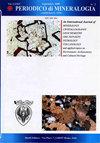基于改进相似系数法整合可行性评估与细胞形成问题的比较研究
IF 1.2
4区 地球科学
Q3 GEOCHEMISTRY & GEOPHYSICS
引用次数: 0
摘要
本研究的重点是基于成组技术概念的细胞制造系统。CM的主要目标是将机器和部件组织成细胞和家族。单元创建问题是大多数建议的模型、算法和方法的焦点。只有少数人考虑过可行性研究和细胞形成问题。本研究提出了一种新的相似系数策略来处理细胞制造过程中细胞形成的挑战以及操作顺序。在本研究中,采用了三种策略来整合可行性评估和细胞形成挑战。这项研究考虑了性能指标,如特殊元素(PE)的百分比,机器利用率(MU),键效率(BE),分组技术效率(GTE)和细胞内运动效率(EIM)。提出的相似系数法用于在生成细胞编队之前确定最佳细胞数。所提出的方法已经在文献中一些最著名的案例上进行了测试,例如实际的工业数据。计算结果表明,在大多数情况下,所提出的相似系数方法产生了最好的结果。建议的技术被评估为两种熟悉的聚类方法,Rusell & Rao和ROC算法,这是从文献中选择的。五个绩效指标用于比较和评价。最后,对数据进行了分析,以验证所提出的相似系数方法是否能够得到检验和验证。结果表明,使用新的相似系数方法得到的结果与使用其他聚类方法得到的结果相当或更好。本文章由计算机程序翻译,如有差异,请以英文原文为准。
A Comparative Study of Integrating Feasibility Assessment and Cell Formation Problem Using Modified Similarity Coefficient Method
The focus of this research is on cellular manufacturing systems based on group technology concepts. The primary goal of CM is to organize machines and parts into cells and families. The cell creation problem is the focus of the majority of suggested models, algorithms, and approaches. Only a few people have thought about the feasibility study and the cell formation issue. A new similarity coefficient strategy for handling cell formation challenges in cellular manufacturing is proposed along with operation sequence in this research. Three strategies are used to integrate a feasibility assessment with the cell formation challenge in this study. This study takes into account performance indicators such as the percentage of Exceptional Elements (PE), Machine Utilization (MU), Bond Efficiency (BE), Grouping Technology Efficiency (GTE), and Efficiency of Intra-cell Movements (EIM). The proposed similarity coefficient approach is used to identify the optimal number of cells before generating a cell formation. The proposed method has been tested on some of the most well-known cases in the literature, such as real-occasion industrialized data. The computational findings show that in the majority of the situations, the proposed similarity coefficient approach produces the best outcomes. The suggested technique is evaluated to two familiar clustering approaches, Rusell & Rao and the ROC algorithm, which were chosen from the literature. Five performance measures are used for comparison and evaluation. Finally, the data are analyzed to see if the proposed similarity coefficient approach can be tested and validated. The results show that using the novel similarity coefficient approach produces results that are on par with or better than those obtained using other clustering methods.
求助全文
通过发布文献求助,成功后即可免费获取论文全文。
去求助
来源期刊

Periodico Di Mineralogia
地学-地球化学与地球物理
CiteScore
1.50
自引率
14.30%
发文量
0
审稿时长
>12 weeks
期刊介绍:
Periodico di Mineralogia is an international peer-reviewed Open Access journal publishing Research Articles, Letters and Reviews in Mineralogy, Crystallography, Geochemistry, Ore Deposits, Petrology, Volcanology and applied topics on Environment, Archaeometry and Cultural Heritage. The journal aims at encouraging scientists to publish their experimental and theoretical results in as much detail as possible. Accordingly, there is no restriction on article length. Additional data may be hosted on the web sites as Supplementary Information. The journal does not have article submission and processing charges. Colour is free of charges both on line and printed and no Open Access fees are requested. Short publication time is assured.
Periodico di Mineralogia is property of Sapienza Università di Roma and is published, both online and printed, three times a year.
 求助内容:
求助内容: 应助结果提醒方式:
应助结果提醒方式:


